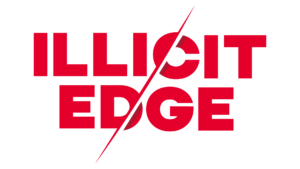IE Insights: The Dangerous Evolution of Iran’s Nuclear Weapons Program
Since the 2015 Nuclear Deal (Joint Comprehensive Plan of Action or JCPOA), Iran’s nuclear weapons program has evolved in a number of ways that are concerning to the international community. These changes include:
—
- Enriching uranium to higher levels: Iran has enriched uranium to up to 60% purity, which is well above the 3.67% limit set by the JCPOA. This is a significant increase and could be used to produce nuclear weapons.
- Installing more advanced centrifuges: Iran has installed more advanced centrifuges, such as IR-6 centrifuges, which are more efficient than the centrifuges allowed under the JCPOA. This could allow Iran to enrich uranium more quickly.
- Pursuing new nuclear technologies: Iran has been pursuing new nuclear technologies, such as laser enrichment, which could be used to enrich uranium more quickly and efficiently.
- Expanding its nuclear facilities: Iran has expanded its nuclear facilities, including its uranium enrichment facilities at Natanz and Fordow. This could allow Iran to produce more nuclear material.
- Refusing to cooperate with the International Atomic Energy Agency (IAEA): Iran has limited the IAEA’s ability to monitor its nuclear program, making it difficult for the agency to verify that Iran is not violating the JCPOA.
- Producing more heavy water: Iran has produced more heavy water, which can be used to cool nuclear reactors and produce weapons-grade plutonium.
- Refusing to dismantle its Fordow nuclear facility: Fordow is a uranium enrichment facility built underground to make it more difficult to target. Iran has refused to dismantle Fordow, even though it was required to do so under the JCPOA.
- Developing uranium metal production capabilities: Iran has begun producing uranium metal, a material that can be used in the core of a nuclear weapon. This development is particularly alarming as it signifies a potential step towards weaponization.
- Increasing stockpiles of enriched uranium: Iran’s stockpiles of enriched uranium have significantly increased, far exceeding the limits set by the JCPOA. This accumulation of material brings Iran closer to having enough fissile material for a nuclear weapon.
- Conducting ballistic missile tests: Iran has continued to develop and test ballistic missiles, which are capable of delivering nuclear warheads. This ongoing missile program adds to concerns about Iran’s potential to develop a nuclear weapon delivery system.
- Expanding missile and drone capabilities: Iran is likely to continue improving the precision of its missiles and developing longer-range systems. This includes interest in hypersonics and space capabilities, which could have dual-use applications for ballistic missile technology.
- Decreasing breakout time: The production of highly enriched uranium has significantly reduced the time Iran would need to produce weapons-grade uranium, thereby shortening the breakout time to potentially develop a nuclear weapon.
—
These developments highlight the ongoing challenges and complexities in addressing Iran’s nuclear ambitions and ensuring regional and global security.
